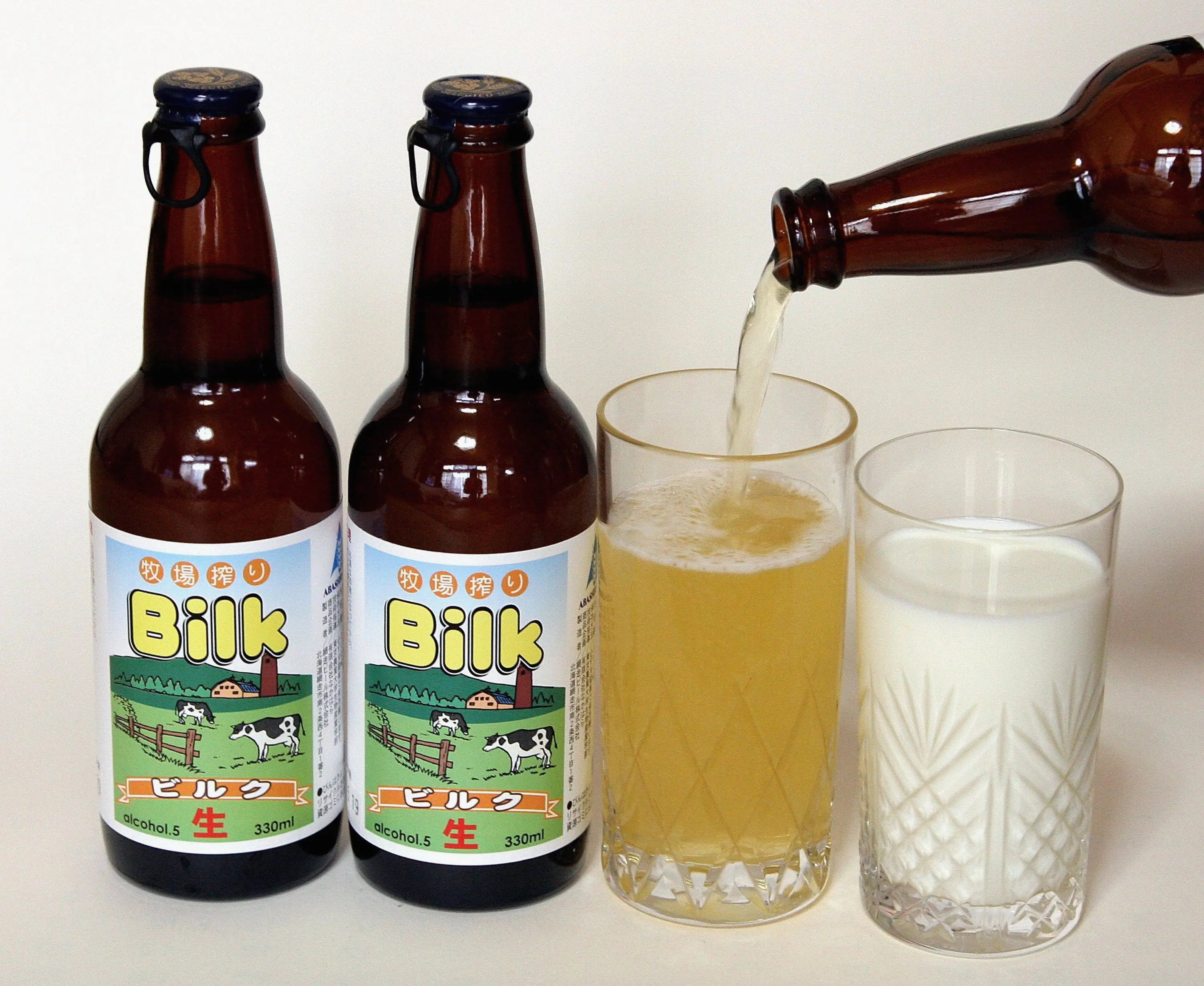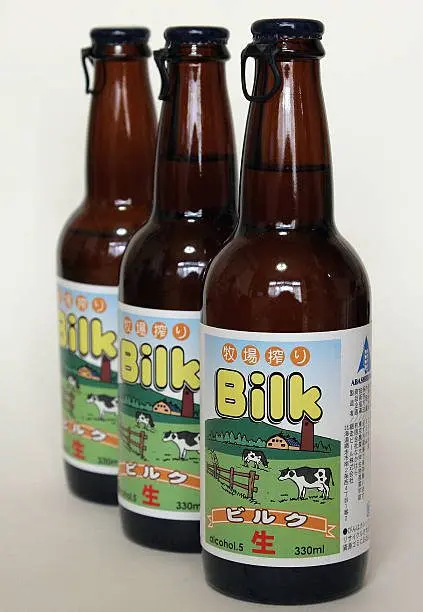Contents
Bilk (beer + milk) – Japanese milk beer. The drink originated in 2007 at the Abishiri brewery in Hokkaido as a way to dispose of excess milk that people just wanted to throw away. According to the manufacturer, unusual alcohol combines the best taste of both components, contains calcium and is good for health in moderation.
The overproduction of milk is explained by the fact that the Japanese, like representatives of many other Asian countries, almost do not drink milk and do not eat dairy products – their body does not break down lactose. Of course, now this problem can be easily solved with artificial enzymes, but historically milk has not been included in the diet of the Japanese and the demand for it is small.
Despite the fact that the first trial batches have already been released to the market (330 ml bottles were sold at the Nakahara store for 380 yen), sales are now suspended and the manufacturer is still working on the characteristics of the drink. Consumers accepted Bilk without enthusiasm, he did not become a sales leader.
Features
Bilk officially belongs to the category of beer drinks with a low malt content. The product is 33% milk, but the manufacturer plans to reduce the share of this ingredient to 22%. Outwardly, bilk resembles tea with milk, but its taste is more fruity. The strength of “milk beer” is 5%. First of all, milk beer is designed for a female audience.

History
Until the 1990s, the beer market was relatively stable, with consumer tastes leaning towards pils, IPA, lager, and occasionally porter and stout. Closer to the 2000s, experiments began, craft beer came to the fore, beer drinks based on juices, lemonades, and even herbal infusions also began to appear.
Bilk has become, on the one hand, a response to the general trend, on the other hand, the optimal solution for using excess milk. The manufacturer believed that the new product would be to the taste of buyers, the only problem that the brewers had to face was how to make sure that the milk did not curdle (approximately the same problem was successfully solved by the manufacturer of Baileys liqueur).
Beer is quite acidic in nature, with a pH level ranging between 4.1 and 4.6. Milk reacts to this in the same way as if lemon juice were added to it – it curdles. To neutralize this effect, you need to take very fatty milk, even better cream, which resists the effects of an acidic environment. Also, all ingredients must be fresh (acidity increases over time), and finally, the components must be mixed slowly.
Production technology
Milk is mixed with saccharified and filtered malt wort, then brewer’s yeast and hops are added, the mixture is slightly warmed up with warm air (temperature control is very important at this stage, otherwise the product will curdle) and wait for the end of fermentation. Then the drink is filtered again, cooled and bottled.

How to drink Bilk
Tasters say that due to the sweetish taste, the drink goes well with desserts and sweets.
Consumer opinion
Bilk did not accept the European world, even for the Japanese, who are accustomed to gastronomic experiments, the drink turned out to be too peculiar.
From English, bilk is translated as “scam”, “deception”, “fraud”, and many consumers agree that the term describes the product in the best possible way.
Other alcoholic beverages made from milk
- Kumis is a Mongolian drink based on fermented mare’s milk. Fortress 1-2.5%.
- Arak is a distillate based on koumiss, a strength of 40%.
- Khuremge – Buryat dairy mash, 1-3% fortress.
- Tarasun – milk vodka from Buryatia, 40% alcohol.
- Shubat (aka chal) – fermented fatty camel milk, ~1% ABV. Manufactured in Kazakhstan and Turkmenistan.









